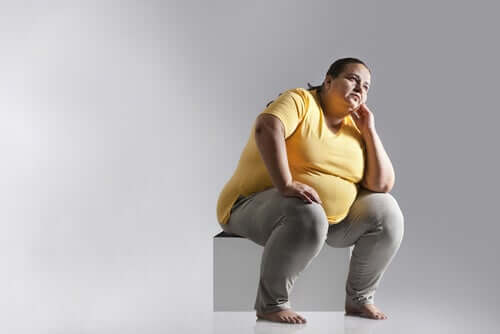Keys to Good Postural Hygiene


Written and verified by the doctor Karina Valeria Atchian
Postural hygiene refers to a series of recommendations to avoid back pain, with adequate protection of the spine. This group of bones is vitally important for everyday life.
People tend to experience neck or lower back pain relatively frequently. It’s true that these pains are due to different causes, but, fortunately, a very small percentage of these are from serious causes.
In many cases, the modern rhythm of life will be a factor that influences the presence of pain, since sedentary lifestyle is a circumstance that causes back and neck discomfort. You can also add bad postures to this.
In this article we’ll take a look at the consequences of a sedentary life and the keys to good postural hygiene.
What are the consequences of a sedentary life?
General inactivity results in a sedentary life. This is associated with maintaining postures for long periods, always in the same position. The lack of change numbs muscles and tendons.
Due to the conditions of modern-day life, people use transportation more often, and take fewer walks to get around. Motorized vehicles are one more element that increases sedentary lifestyle.
Due to schedules and time, people of active working age perform less physical activity, which translates into a higher average weight with the global obesity epidemic. Fat tissue isn’t the only problem; it can also lead to a weakening of muscles.

See also: Physical Inactivity in Children: A Growing Epidemic
What is postural hygiene?
Postural hygiene comes to the rescue of the bone and muscular consequences of a sedentary lifestyle. Basically, we’re talking about corrections when sitting and standing, as well as changing your sleeping posture.
In the most active part, postural hygiene also helps you to carry weight in a healthy way and carry out physical activity in the correct way so as not to injure yourself. We’ll take a detailed look at each of the keys to good postural hygiene.
Changes when sitting and standing
We propose the following tips:
- Avoid long periods of time in the same position, ideally no more than 30 minutes.
- Maintain a correct posture when sitting, without leaning your head forward.
- Keep your head and torso aligned.
- Don’t stay for long periods with your head looking down or up.
- When using computers, position the monitor at eye level. The keyboard, in turn, should be wide.
- Pay attention to the need to wear glasses if you have poor eyesight.
- Use chairs that allow you to sit with your back supported and feet on the floor. It’s best to use ones with armrests.
Changes in sleeping posture
You should sleep on your side and on your back. You should also use a single pillow, neither too low nor too high.
As in the upright position, you have to align your head and torso, without putting your hands under your head or lying face down. Your mattress is essential for good sleep postural hygiene, since a poor quality mattress will be impossible to counteract with a good position.
You should only sleep on your bed. Resting on furniture, like sofas and armchairs, that aren’t made for sleeping is counterproductive.
See also: Which Mattress is Recommended to have a Good Night’s Rest?
Adjustments when carrying weight
If you’re going to carry weight or have to do a heavy job, it’s important to follow these recommendations:
- Distribute the loads between both upper limbs or shoulders, if you’re carrying weight or a backpack.
- If you have to lift a weighty object off the floor, bend your knees when reaching for it.
- Use a platform or ladder if you have to pick up items that are above your shoulders.
- Keep loads close to your body.
- Learn to position properly, prioritizing the alignment of the spine and distribution of loads.

Performing physical activity
We recommend you do aerobic physical activity several times a week. Examples include walking, running, swimming, and biking. That way you’ll balance out the sedentary lifestyle you’re often forced into. You should combine physical activity with muscle stretching exercises.
Even at work, we recommend you stay active whenever possible. And, to get to work, we recommend you use vehicles as little as possible. Even if you’re stuck at home, you can implement activities to achieve mobility. For example, walking while talking on the phone.
What is the purpose of good postural hygiene?
The main benefit will be the protection of the joints along the spine, as well as avoiding contractions in the back and neck area. In turn, this will improve movement and decrease pain.
We could add to all the above the importance of leading a healthy life, avoiding being overweight, and limiting stressful situations.
Back and neck pain is usually self-limited. It’s also true that they’re recurring. In some patients, there are situations where back and neck contractions require specific treatment.
If the pain lasts a long time or worsens in intensity, we recommend that you consult your family doctor or spinal specialist. They’ll know how to guide your diagnosis and treatment.
All cited sources were thoroughly reviewed by our team to ensure their quality, reliability, currency, and validity. The bibliography of this article was considered reliable and of academic or scientific accuracy.
- Stephanie G Wheeler and cols, Evaluation of low back pain in adults, retrieved on 12 May 2020, Evidence-based Clinical Decision Support- UpToDate. https://www.uptodate.com/contents/evaluation-of-low-back-pain-in-adults?search=back%20pain&source=search_result&selectedTitle=1~150&usage_type=default&display_rank=1
- Carolin Bontru y cols, Low back pain and its relationship with sitting behaviour among sedentary office workers, Applied Ergonomics, Volume 81, November 2019.
- Maureen R Gecht-Silver and cols, Joint protection program for the neck, retrieved on 12 May 2020, Evidence-based Clinical Decision Support- UpToDate. https://www.uptodate.com/contents/joint-protection-program-for-the-neck?search=posture&source=search_result&selectedTitle=2~150&usage_type=default&display_rank=2#H7
This text is provided for informational purposes only and does not replace consultation with a professional. If in doubt, consult your specialist.








